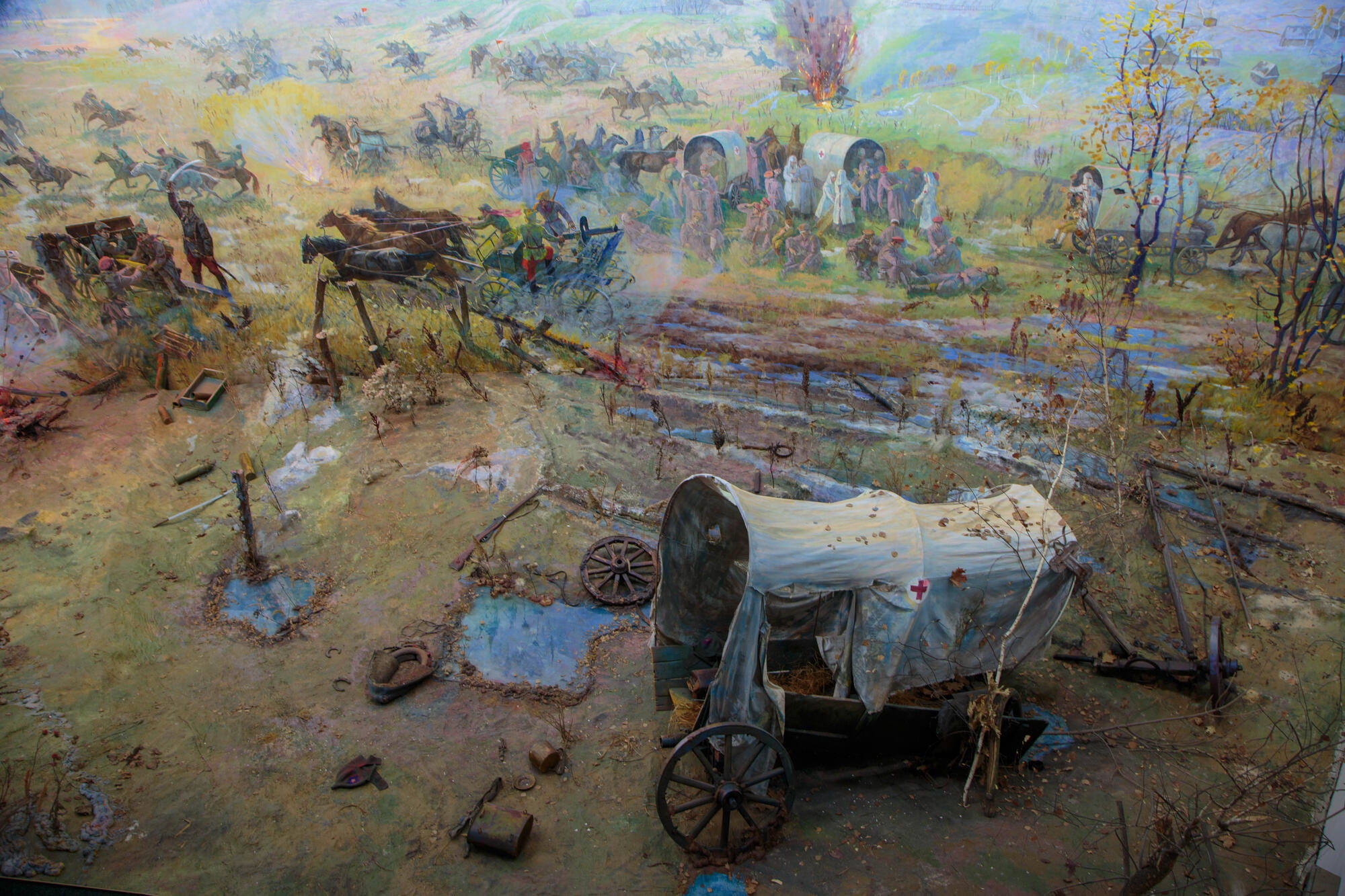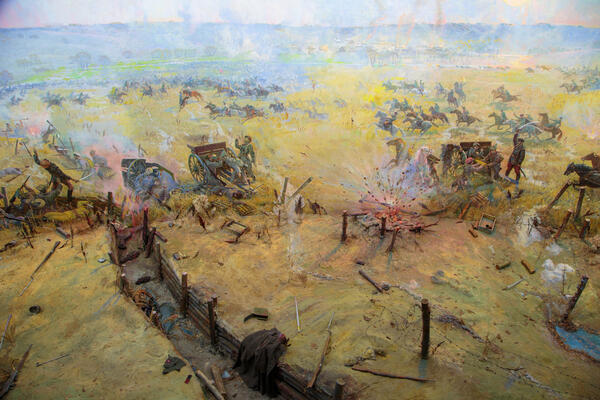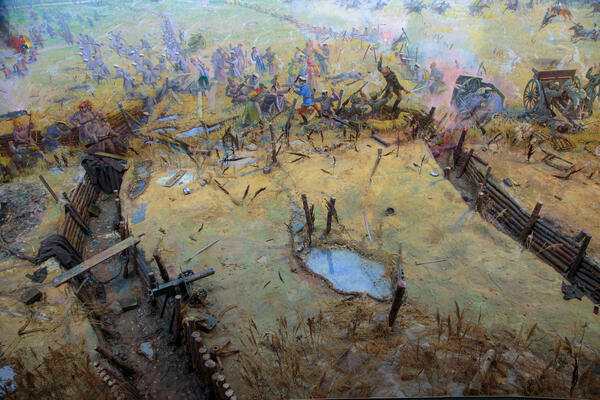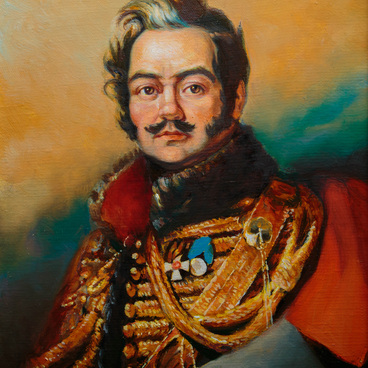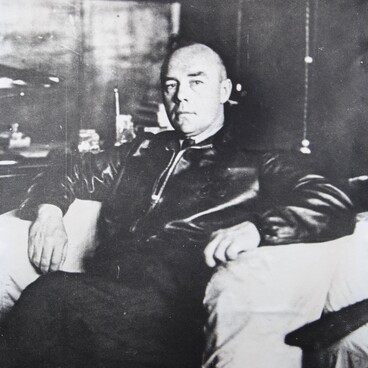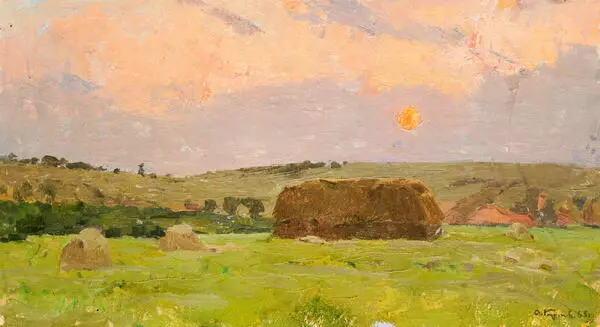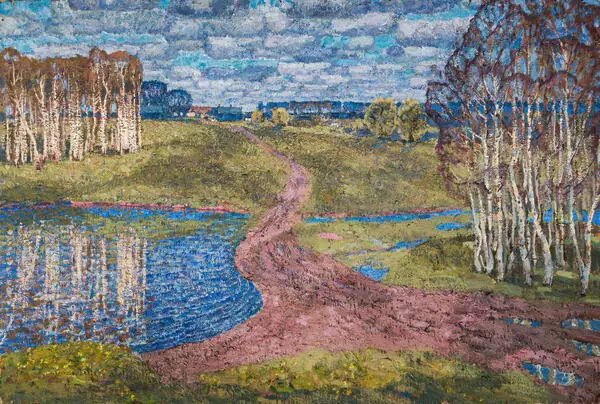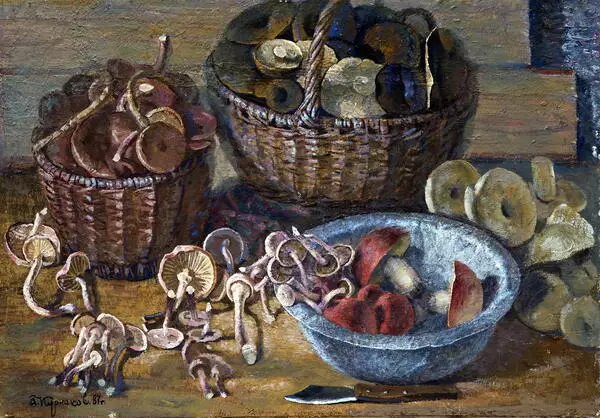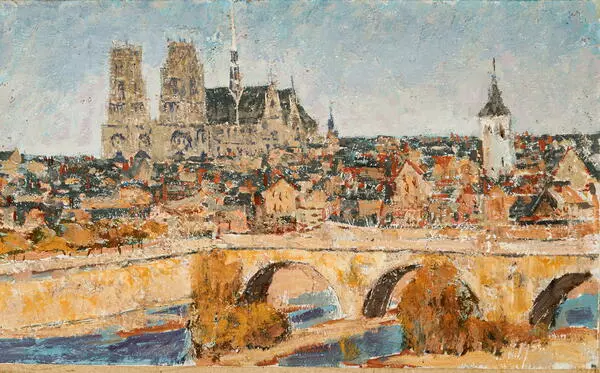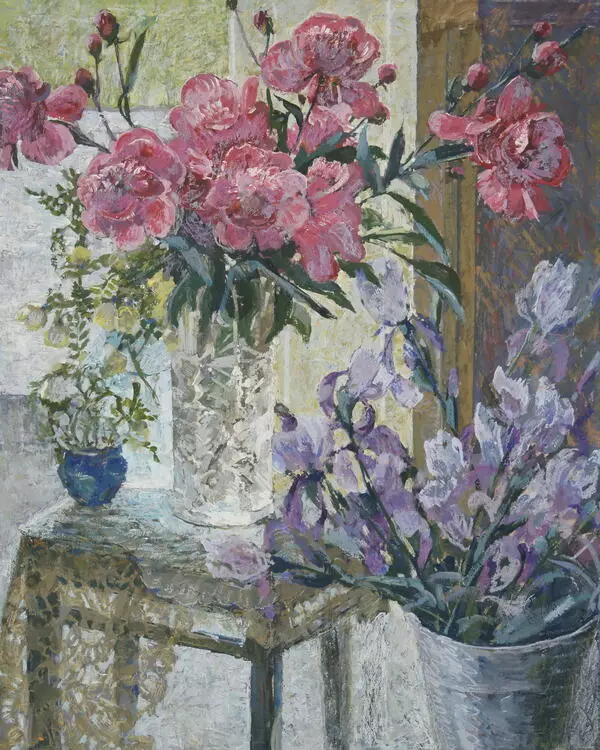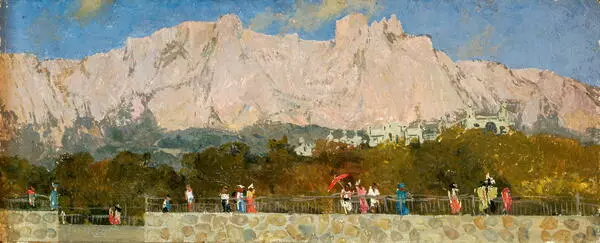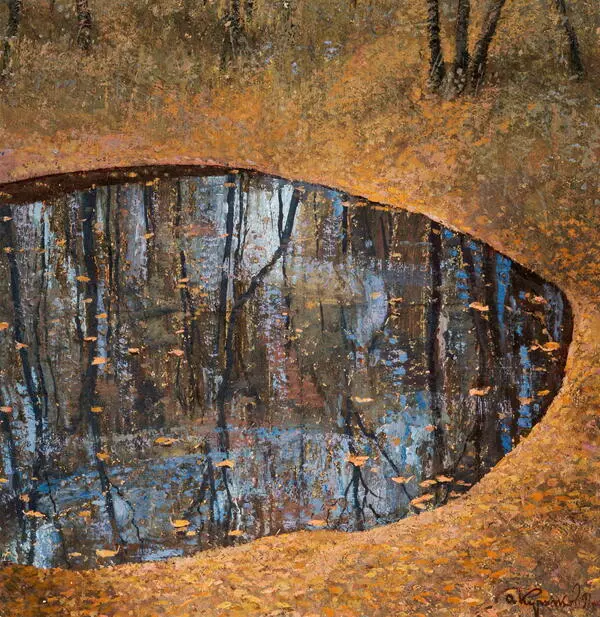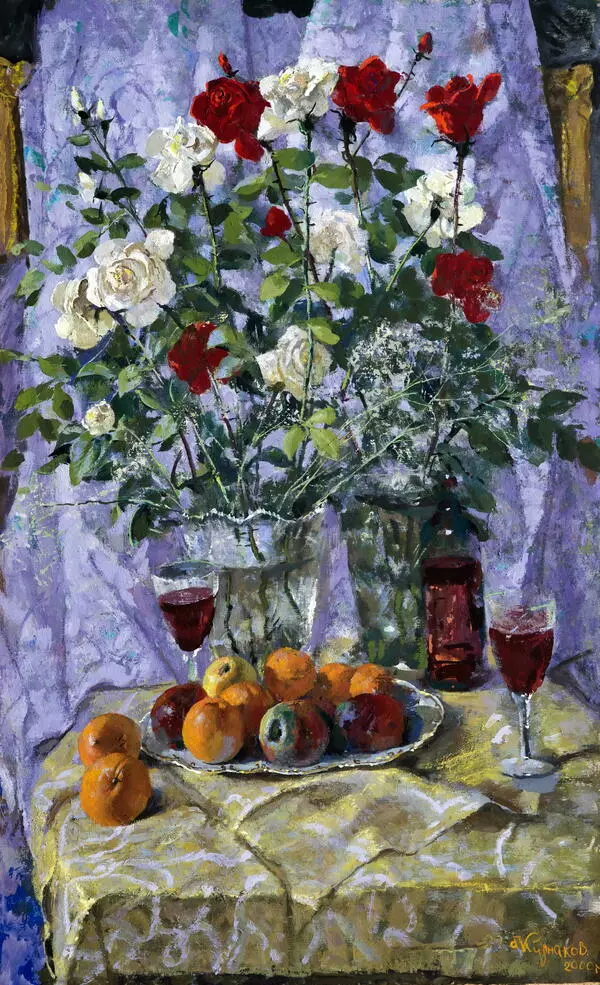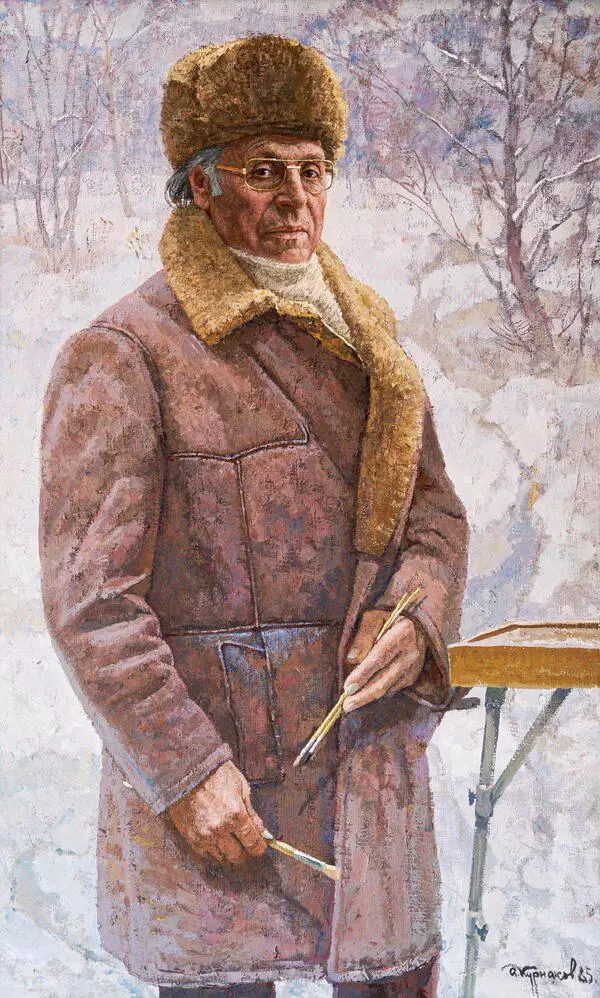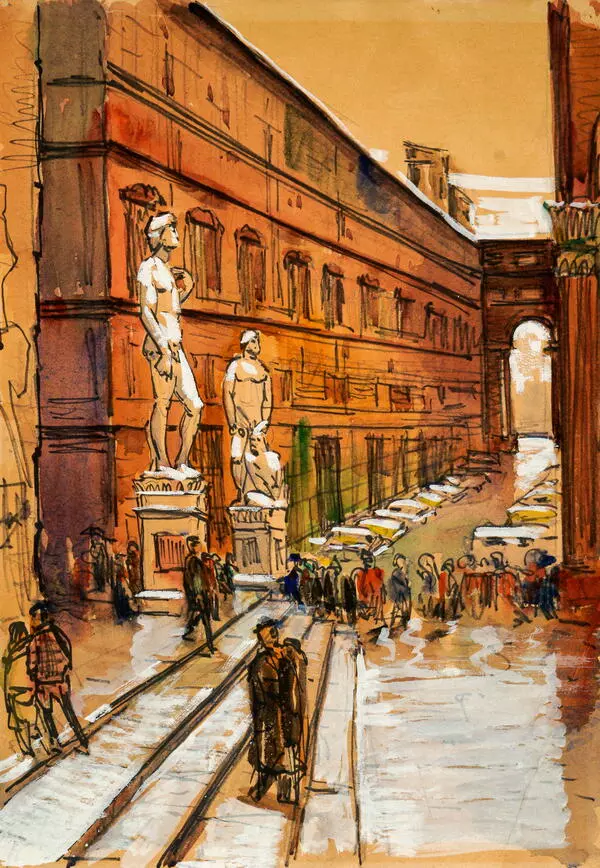The Soviet and Russian painter Andrey Ilyich Kurnakov (1916–2010) was born to a family of workers in Oryol. In 1937, he graduated with honors from the Oryol Art School, and began collaborating with a youth newspaper.
During the Great Patriotic War, Kurnakov fought as part of the 55th Tank Brigade of the 51st Army. On May 20, 1942, he was captured in the Kerch region. Upon being released, Andrey Kurnakov arrived at the military transfer point of the 230th Army Reserve Rifle Regiment of the 2nd Ukrainian Front of the 53rd Army. He concluded his combat path in Mongolia.
After the war, Andrey Kurnakov decided to continue his studies. In 1947–1948, he studied at the Moscow Studio for Artists of the Territories, Regions and Autonomous Republics of the RSFSR, and in the mid-1950s graduated from the Kharkiv Art Institute. After that, he returned to his native land and worked at a pedagogical institute.
Andrey Kurnakov completed the diorama “The Battle near Kromy, October 1919” one year before his death. The work introduces an episode of the Russian Civil War, when the troops of the Southern Front under the command of Alexander Ilyich Yegorov and members of the Revolutionary Military Councils Joseph Vissarionovich Stalin and Grigory Yakovlevich Sokolnikov contributed to the defeat of the Oryol group of the White Guard troops led by General Anton Ivanovich Denikin.
Back in September 1919, the 14th and 13th Armies overwhelmed by superior enemy forces were retreating. In order to stop the advance of the Armed Forces of South Russia on Moscow, the Central Committee of the Communist Party decided to declare mobilization and take measures to strengthen the troops.
By October 9, the White Guards reached the frontier that passed through Khutor-Mikhailovsky, Sevsk, Dmitrovsk, Yeropkino, Livny, and Petrovskoye. The White Army could go through Oryol to Tula. On the same day, the command of the Southern Front developed a plan for the Oryol–Kromy Operation, which lasted from October 11 to November 18, 1919.
During the Oryol–Kromy Operation, the troops of the Southern Front dealt a major defeat to the Volunteer Army, seizing the initiative. A little later there was a radical change in the fight against Denikin’s troops, and the Red Army’s Southern Front counteroffensive began.
The combat operations of
the Soviet troops in the Oryol–Kromy Operation were characterized by
determination and perseverance in achieving the set goal, fierce fighting for
initiative, bold concentration of forces and equipment in the main directions,
effective strikes on a narrow front, and a wide maneuver on the battlefield.
